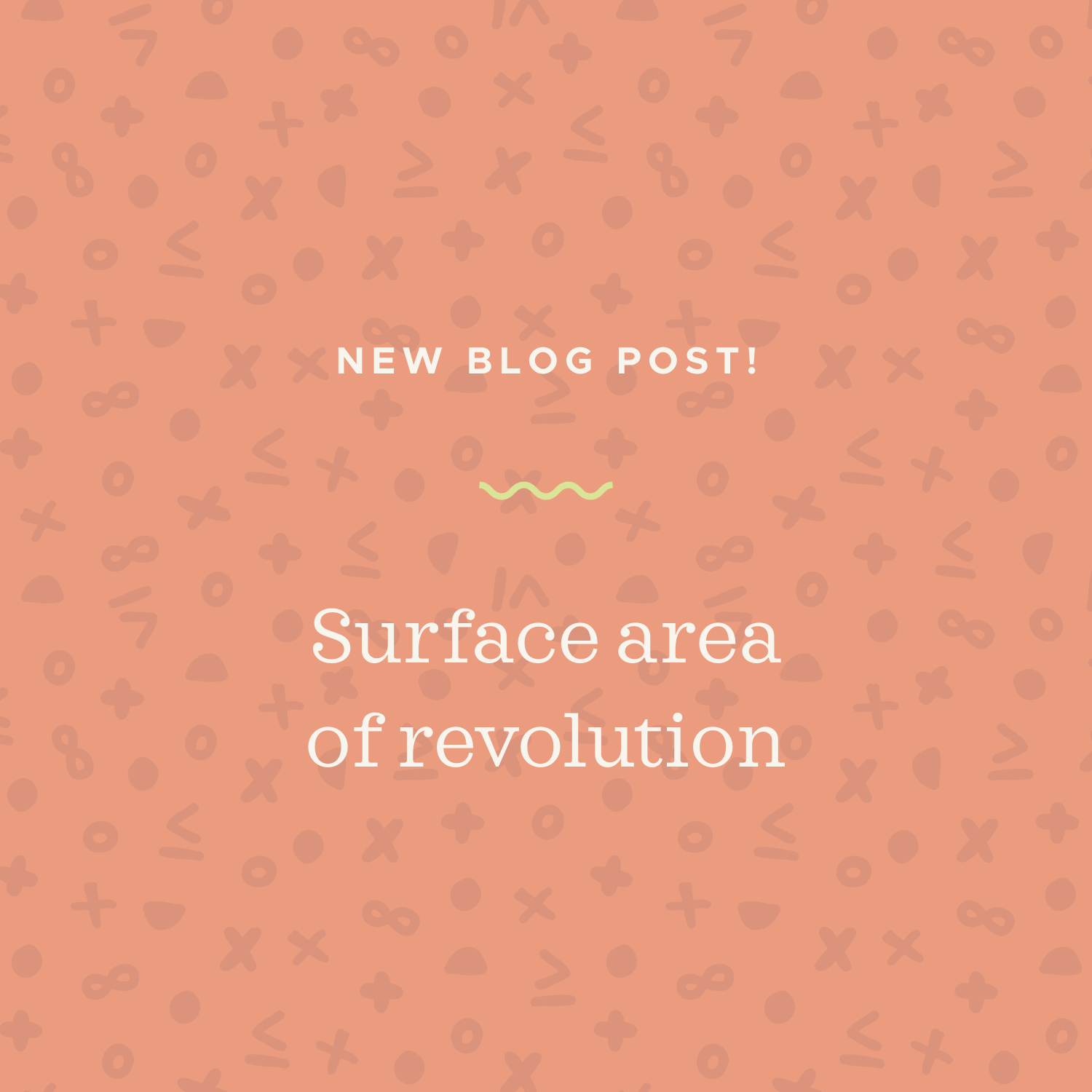Surface area of revolution around the x-axis and y-axis
Formulas to find the surface area of revolution
We can use integrals to find the surface area of the three-dimensional figure that’s created when we take a function and rotate it around an axis and over a certain interval.
The formulas we use to find surface area of revolution are different depending on the form of the original function and the axis of rotation.
Hi! I'm krista.
I create online courses to help you rock your math class. Read more.
1. When the function is in the form ???y=f(x)??? and you’re rotating around the ???y???-axis, the interval is ???a\leq{x}\leq{b}??? and the formula is
???S=\int^b_a2\pi{x}\sqrt{1+\left(\frac{dy}{dx}\right)^2}\ dx???
2. When the function is in the form ???y=f(x)??? and you’re rotating around the ???x???-axis, the interval is ???a\leq{x}\leq{b}??? and the formula is
???S=\int^b_a2\pi{y}\sqrt{1+\left(\frac{dy}{dx}\right)^2}\ dx???
3. When the function is in the form ???x=g(y)??? and you’re rotating around the ???y???-axis, the interval is ???c\leq{y}\leq{d}??? and the formula is
???S=\int^d_c2\pi{x}\sqrt{1+\left(\frac{dx}{dy}\right)^2}\ dy???
4. When the function is in the form ???x=g(y)??? and you’re rotating around the ???x???-axis, the interval is ???c\leq{y}\leq{d}??? and the formula is
???S=\int^d_c2\pi{y}\sqrt{1+\left(\frac{dx}{dy}\right)^2}\ dy???
How to calculate surface area of revolution, whether you’re rotating around the x-axis or the y-axis
Take the course
Want to learn more about Calculus 2? I have a step-by-step course for that. :)
Finding surface area of the rotation around the x-axis over an interval
Example
Find the area of the surface generated by rotating the function about the ???x???-axis over ???0\leq{x}\leq3???.
???y=x^3???
Since the equation is in the form ???y=f(x)???, and we’re rotating around the ???x???-axis, we’ll use the formula
???S=\int^b_a2\pi{y}\sqrt{1+\left(\frac{dy}{dx}\right)^2}\ dx???
We’ll calculate ???dy/dx??? and then substitute it back into the equation.
???\frac{dy}{dx}=3x^2???
???S=\int^3_02\pi{x^3}\sqrt{1+\left(3x^2\right)^2}\ dx???
???S=\int^3_02\pi{x^3}\sqrt{1+9x^4}\ dx???
Using u-substitution and setting ???u=1+9x^4??? and ???du=36x^3\ dx???, we calculate
???x=\left(\frac{u-1}{9}\right)^{\frac14}???
???dx=\frac{1}{36x^3}\ du???
???dx=\frac{1}{36\left[\left(\frac{u-1}{9}\right)^{\frac{1}{4}}\right]^3}\ du???
The formulas we use to find surface area of revolution are different depending on the form of the original function and the axis of rotation.
Plugging these values back into the integral, we get
???S=\int^3_02\pi{\left[\left(\frac{u-1}{9}\right)^{\frac{1}{4}}\right]^3}\sqrt{u}\frac{1}{36\left[\left(\frac{u-1}{9}\right)^{\frac{1}{4}}\right]^3}\ du???
???S=\int^3_02\pi{\left(\frac{u-1}{9}\right)^{\frac{3}{4}}}\sqrt{u}\frac{1}{36\left(\frac{u-1}{9}\right)^{\frac{3}{4}}}\ du???
???S=\frac{\pi}{18}\int^3_0{\left(\frac{u-1}{9}\right)^{\frac{3}{4}}}\sqrt{u}\frac{1}{\left(\frac{u-1}{9}\right)^{\frac{3}{4}}}\ du???
???S=\frac{\pi}{18}\int^3_0\sqrt{u}\ du???
Integrate.
???S=\left(\frac{\pi}{18}\right)\left(\frac{2}{3}u^{\frac{3}{2}}\right)\bigg|^3_0???
???S=\frac{\pi}{27}u^{\frac{3}{2}}\bigg|^3_0???
We’ll plug back in for ???u???, remembering that ???u=1+9x^4???, and then evaluate over the interval.
???S=\frac{\pi}{27}\left(1+9x^4\right)^{\frac{3}{2}}\bigg|^3_0???
???S=\frac{\pi}{27}\left[1+9(3)^4\right]^{\frac{3}{2}}-\left[\frac{\pi}{27}\left(1+9(0)^4\right)^{\frac{3}{2}}\right]???
???S=2,294.8??? square units
The surface area obtained by rotating ???y=x^3??? around the ???x???-axis over the interval ???0\leq{x}\leq3??? is ???S=2,294.8???.






